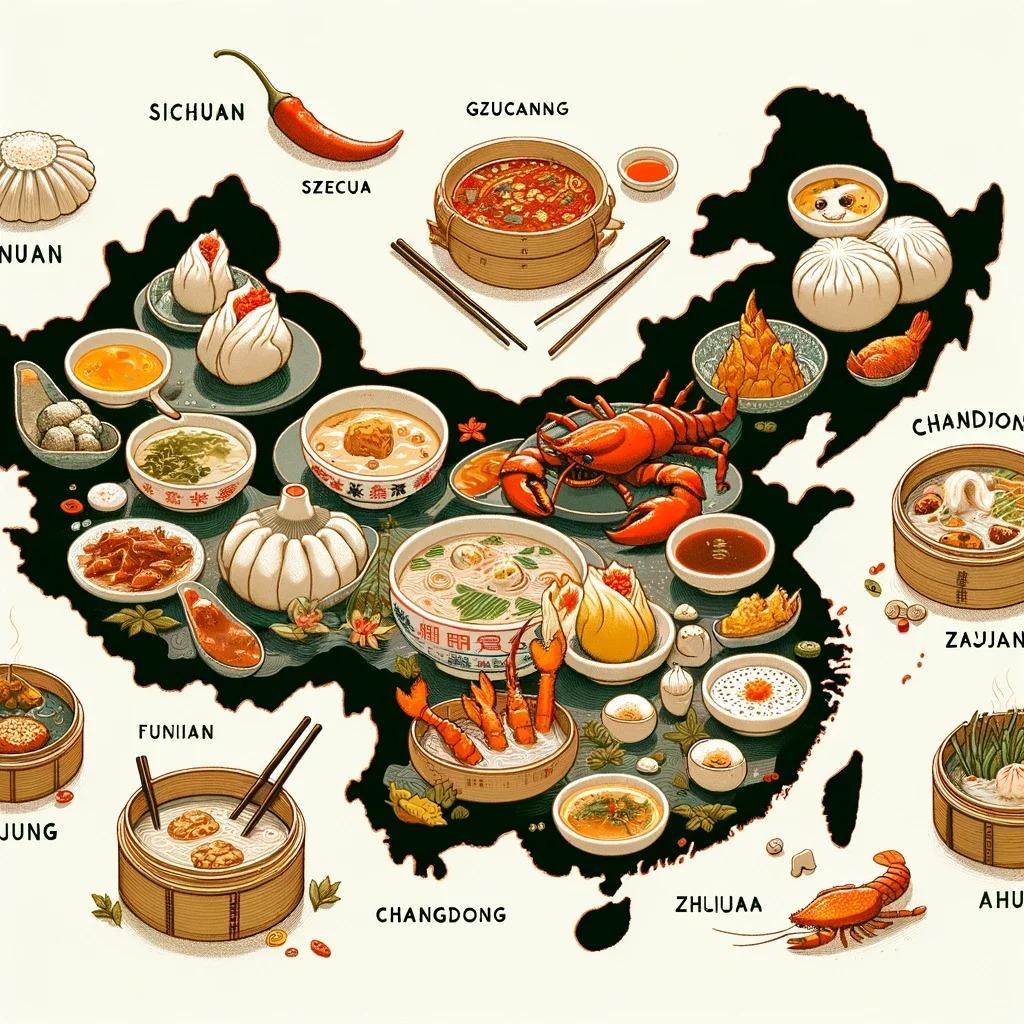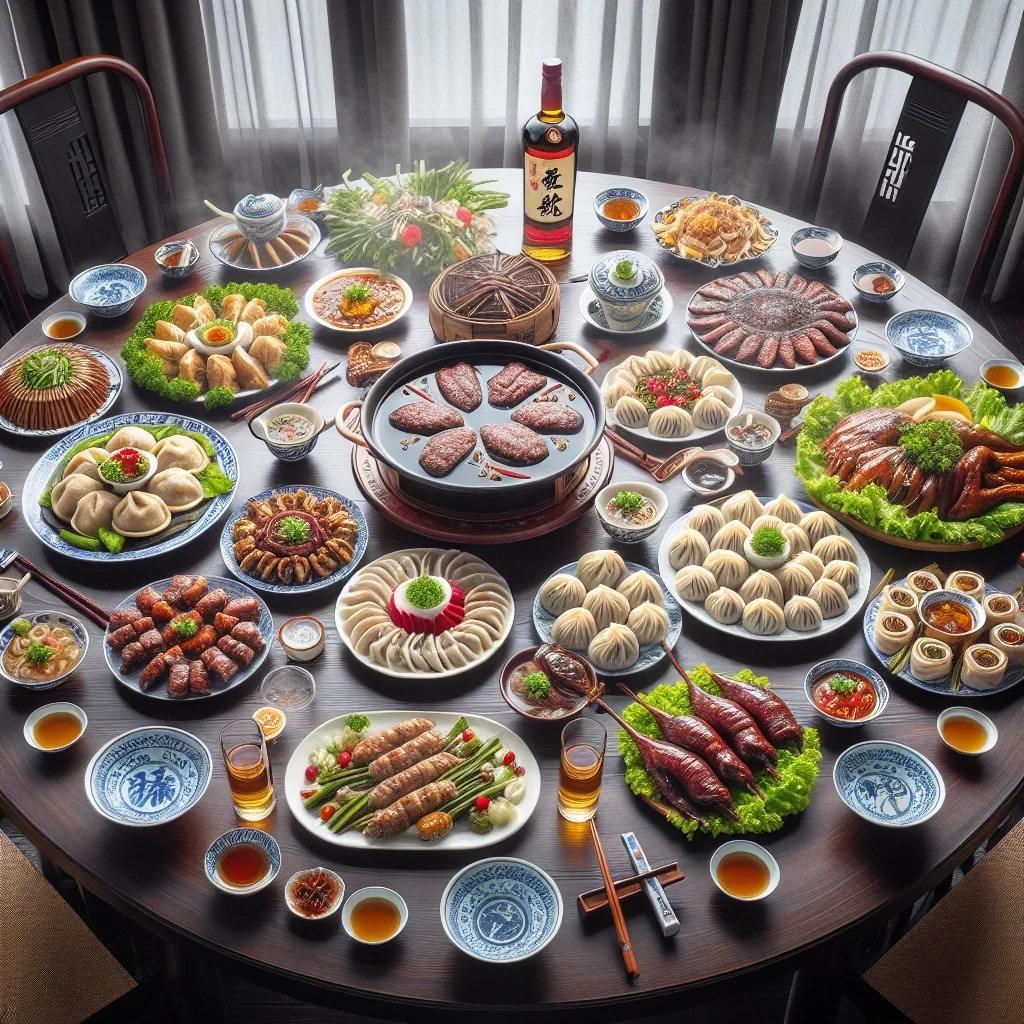Introduction to Chinese Cuisine
Chinese cuisine is a vibrant tapestry of flavors, textures, and culinary traditions that span thousands of years. From the fiery spices of Sichuan to the delicate seafood dishes of Guangdong, China’s vast landscape has given rise to a diverse array of regional cuisines.
The development of Chinese food culture is deeply intertwined with the country’s history, philosophy, and geography. Ancient agricultural practices, trade along the Silk Road, and imperial banquets all played crucial roles in shaping what we now recognize as Chinese cuisine.
At the heart of Chinese cooking lies the concept of balance, rooted in the philosophy of yin and yang. This principle extends beyond mere flavor, encompassing texture, color, and nutritional value to create harmonious dishes that nourish both body and spirit.
Regional Cuisines of China
Chinese cuisine is often categorized into eight great traditions, each with its own distinct flavors and cooking methods:
- Cantonese (Guangdong): Known for its subtle flavors and emphasis on freshness
- Sichuan: Famous for its bold, spicy flavors and liberal use of chili and Sichuan peppercorns
- Shandong: Characterized by its use of braising and seafood
- Jiangsu: Renowned for its elegant presentation and use of river fish
- Zhejiang: Features light, fresh flavors and a lot of seafood
- Fujian: Known for its unique combination of sweet and sour flavors
- Hunan: Similar to Sichuan in its spiciness, but with a more smoky flavor profile
- Anhui: Emphasizes wild herbs and simple cooking methods
Each region boasts signature dishes that showcase its unique culinary identity. For instance, Sichuan is famous for its mapo tofu and kung pao chicken, while Cantonese cuisine is celebrated for dim sum and sweet and sour pork.
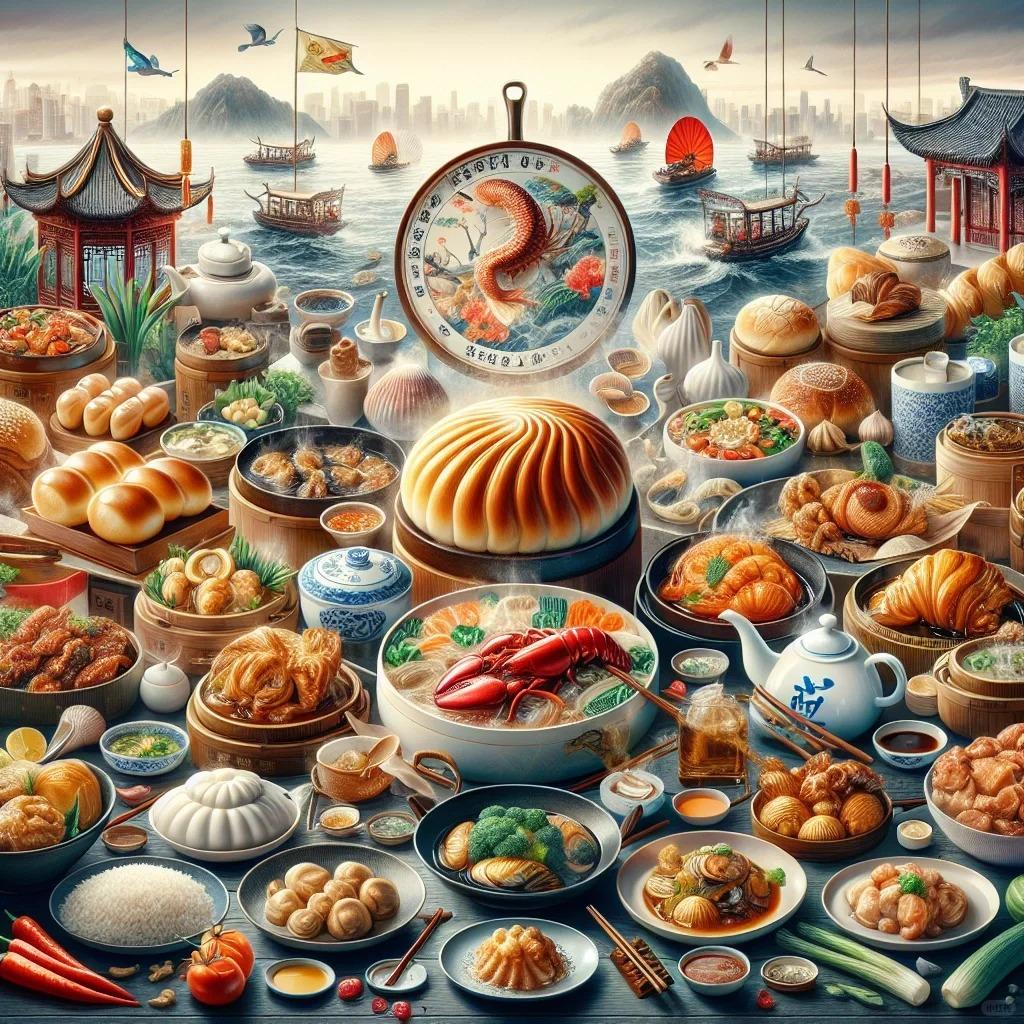
Essential Ingredients in Chinese Cooking
| Category | Examples | Usage |
|---|---|---|
| Seasonings | Soy sauce, five-spice powder, Sichuan peppercorn | Provide depth and complexity to dishes |
| Staples | Rice, noodles, tofu | Form the base of many meals |
| Unique Ingredients | Century eggs, wood ear mushrooms, bitter melon | Add distinctive flavors and textures |
Chinese cuisine relies heavily on a core set of ingredients that impart its characteristic flavors. Soy sauce, for example, is used not just for its saltiness but for the umami depth it brings to dishes. Five-spice powder, a blend of star anise, cloves, cinnamon, Sichuan peppercorn, and fennel seeds, adds a complex, aromatic note to many dishes.
Staple foods like rice and noodles form the foundation of Chinese meals, while tofu serves as a versatile protein source that can be prepared in countless ways. Some ingredients, such as century eggs or bitter melon, might seem unusual to Western palates but are prized in Chinese cuisine for their unique flavors and textures.
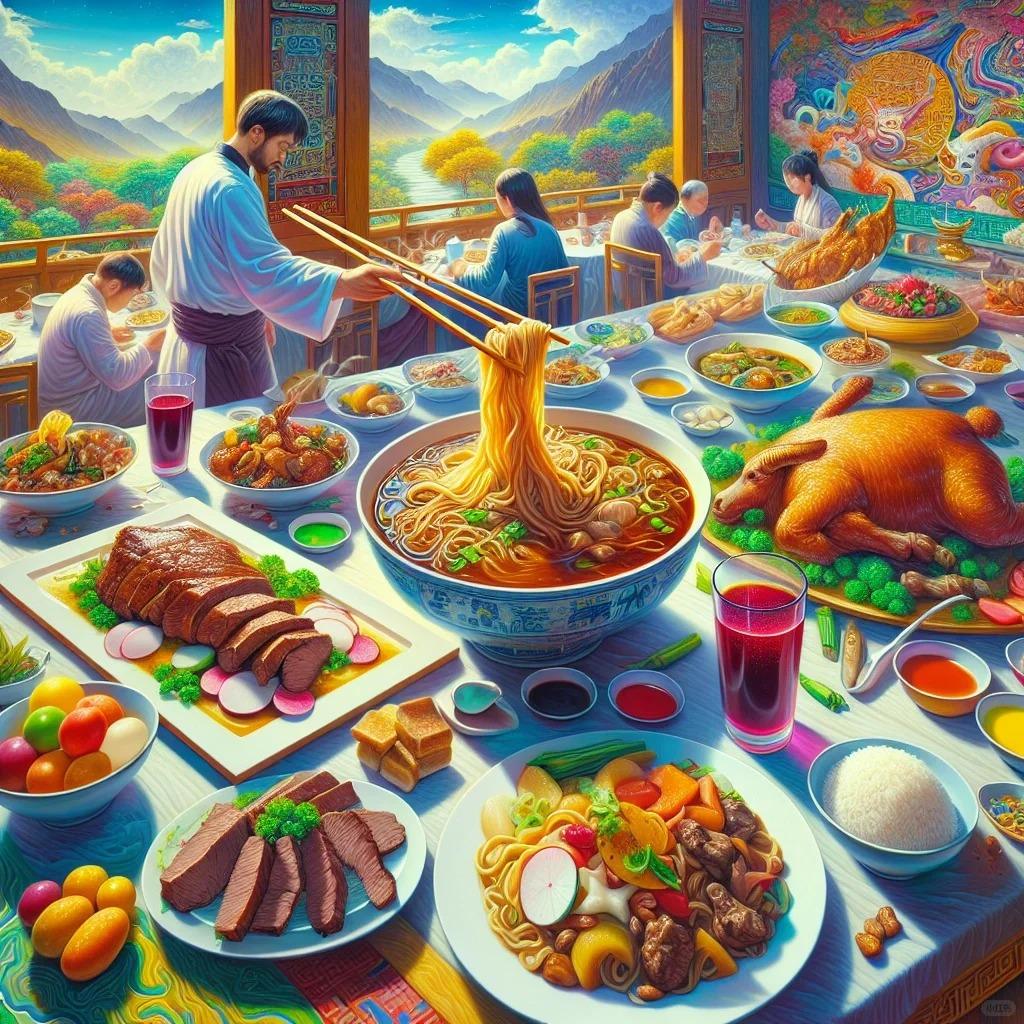
Chinese Cooking Techniques
Chinese cooking techniques are as diverse as its ingredients. Stir-frying, perhaps the most well-known method, involves quickly cooking ingredients over high heat in a wok. This technique preserves the texture and nutritional value of ingredients while imparting a distinctive “wok hei” or “breath of the wok” flavor.
Other important techniques include:
- Steaming: Used for delicate foods like fish and dumplings
- Braising: Perfect for tougher cuts of meat, creating tender and flavorful dishes
- Deep-frying: Used sparingly to create crispy textures
The wok is the cornerstone of Chinese cooking, its rounded shape allowing for even heat distribution and easy tossing of ingredients. Bamboo steamers are another essential tool, used for everything from dumplings to whole fish.
In Chinese cuisine, knife skills are considered an art form. The ability to cut ingredients into uniform sizes ensures even cooking and contributes to the overall harmony of the dish.
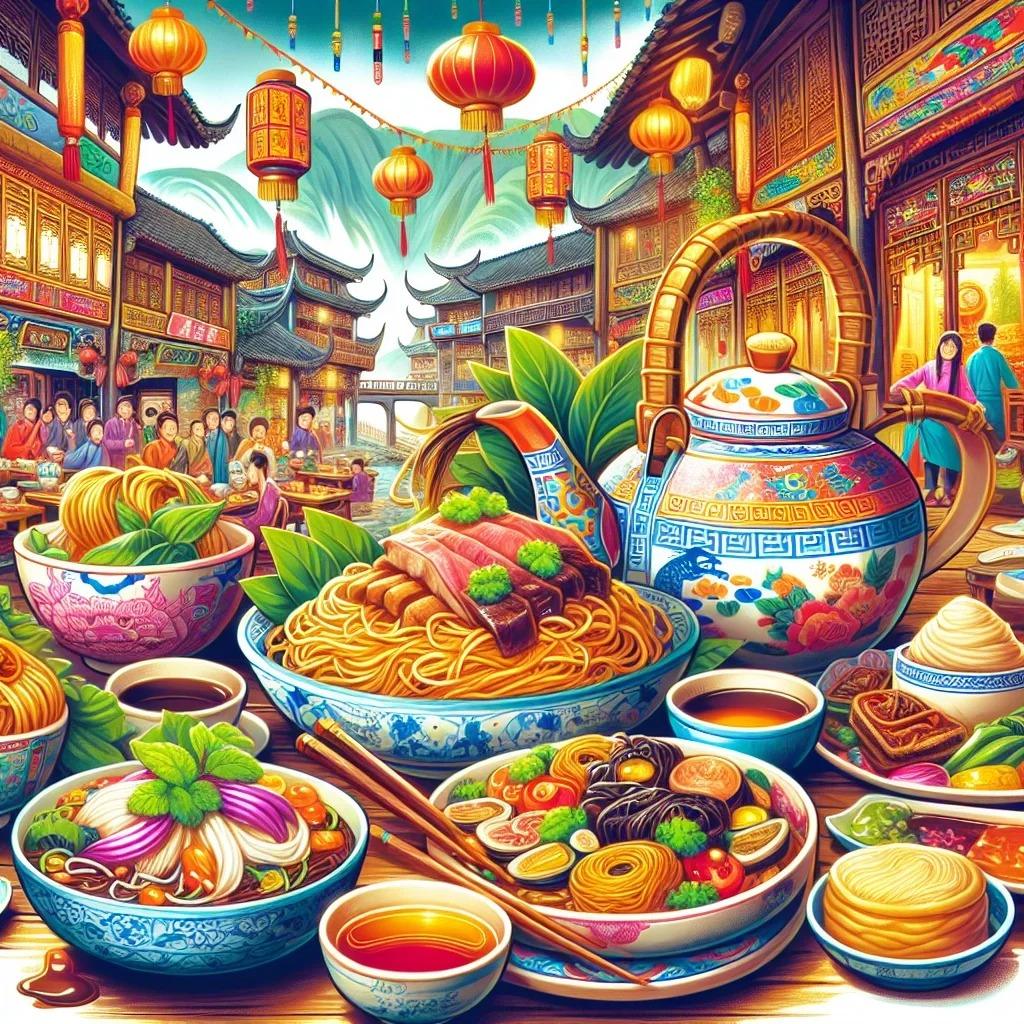
Chinese Food Culture and Etiquette
Communal dining is at the heart of Chinese food culture. Meals are typically served “family style,” with multiple dishes placed at the center of the table for everyone to share. This practice reflects the importance of harmony and togetherness in Chinese society.
When it comes to etiquette:
- Never stick your chopsticks upright in your rice (this resembles incense sticks at a funeral)
- It’s polite to try a bit of every dish
- Tea is often served with meals and has its own set of customs (tapping the table with two fingers is a silent “thank you” when someone refills your cup)
Health and Nutrition in Chinese Cuisine
Traditional Chinese medicine has significantly influenced Chinese dietary practices. Foods are often chosen not just for their flavor but for their perceived health benefits. For example, ginger is believed to warm the body, while chrysanthemum tea is thought to have cooling properties.
A typical Chinese meal aims to balance flavors (sweet, sour, bitter, spicy, and salty) as well as textures and nutrients. Contrary to some Western perceptions, authentic Chinese cuisine is often quite healthy, with an emphasis on vegetables and moderate use of meat.
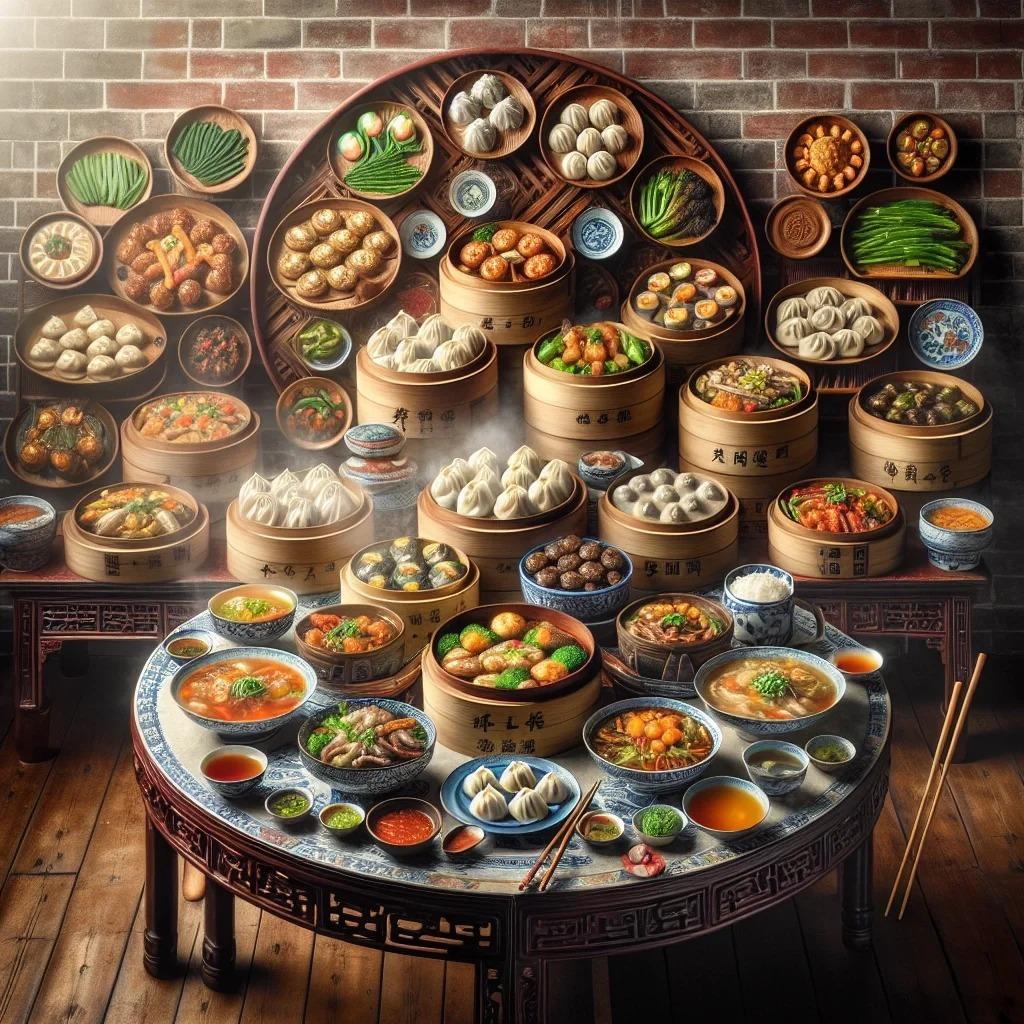
Modern Trends and Global Influence
In the 21st century, Chinese cuisine continues to evolve. Fusion restaurants blend traditional Chinese flavors with Western techniques, creating innovative dishes that appeal to a global palate. At the same time, there’s a growing interest in reviving and preserving traditional regional cuisines.
The global spread of Chinese food has led to interesting adaptations. American Chinese food, for instance, has developed its own unique identity, with dishes like General Tso’s chicken becoming Chinese-American classics. In recent years, there’s been a growing appreciation for more authentic regional Chinese cuisines in the West, moving beyond the familiar Cantonese-inspired dishes.
From its ancient roots to its modern global influence, Chinese cuisine remains a fascinating subject of study and enjoyment. Whether you’re savoring dim sum in Guangzhou or preparing a stir-fry at home, each meal offers a taste of China’s rich culinary heritage.



